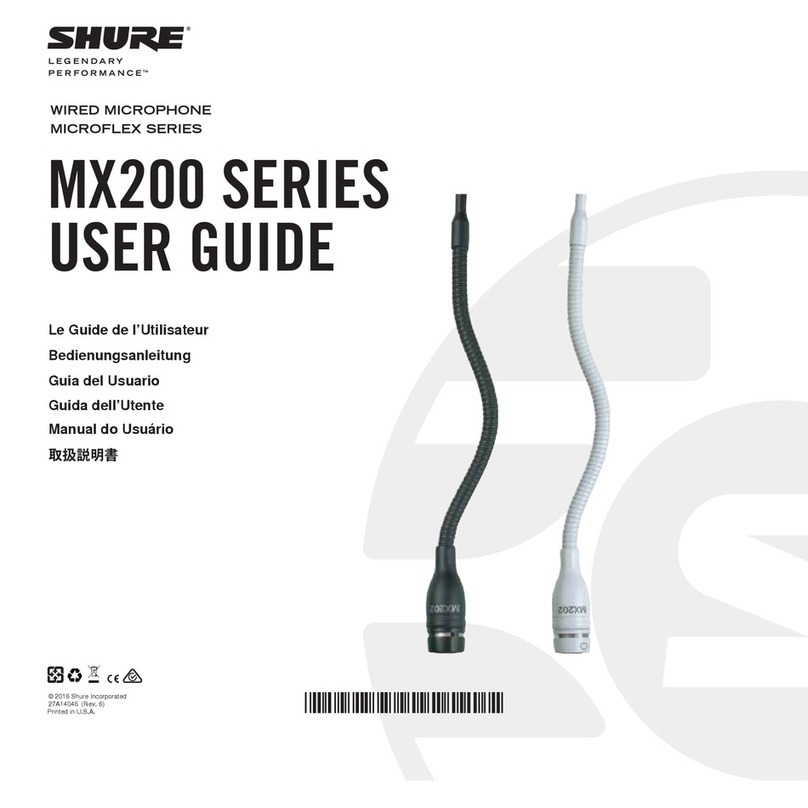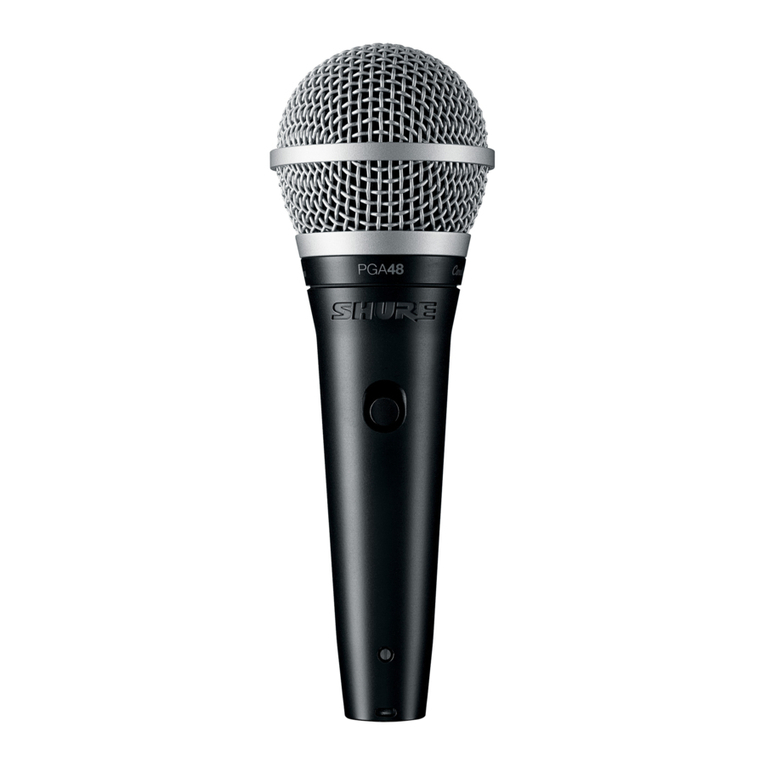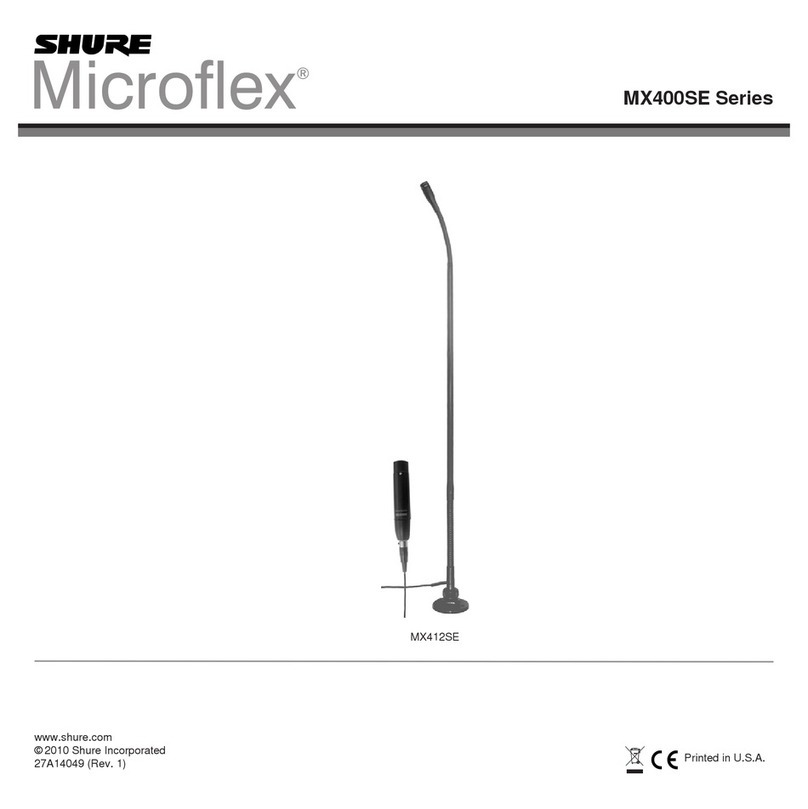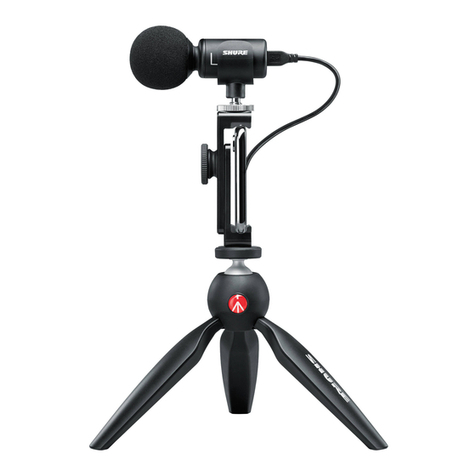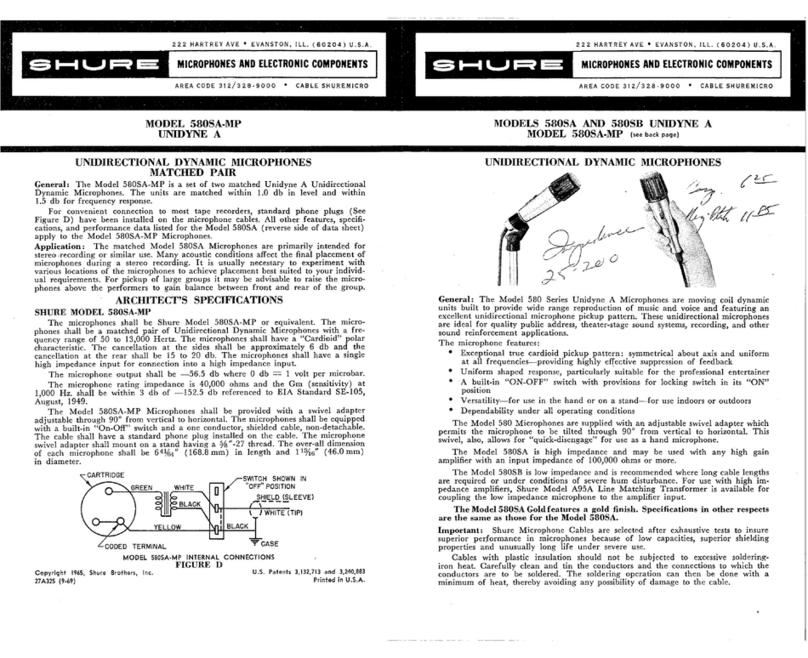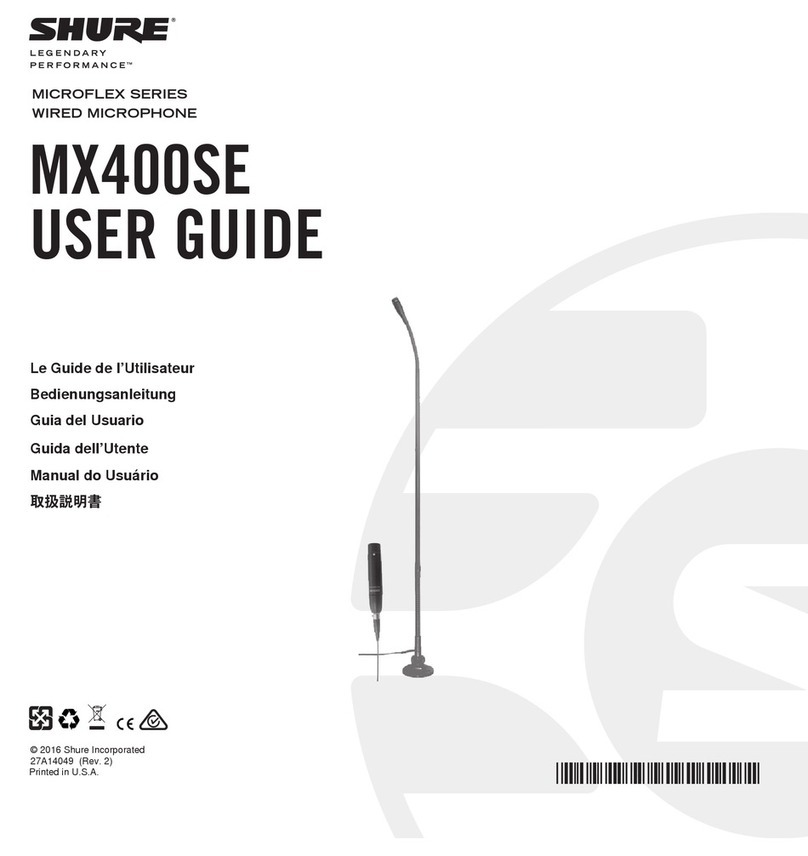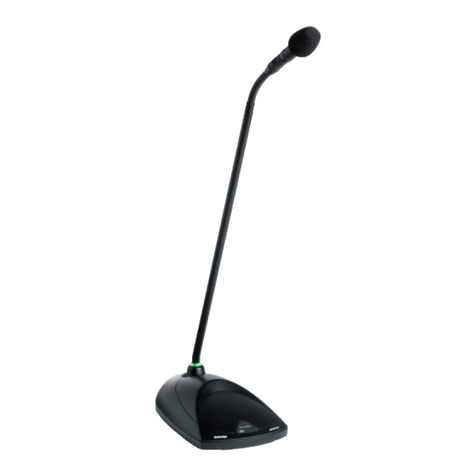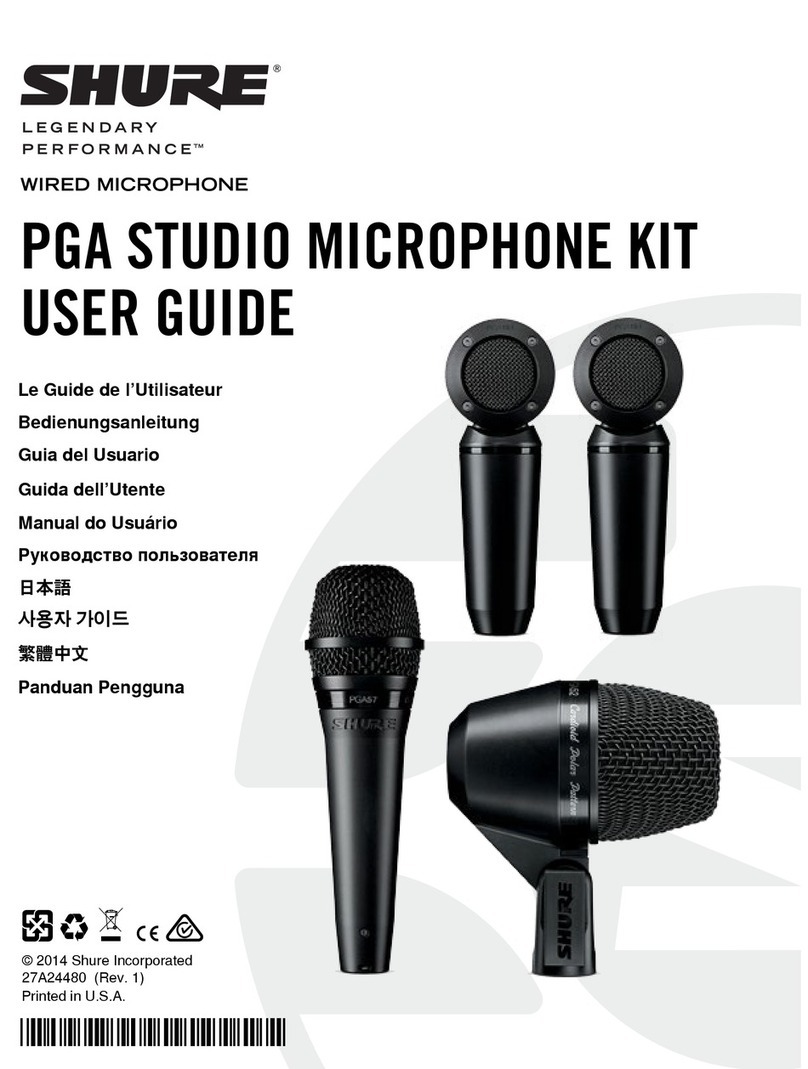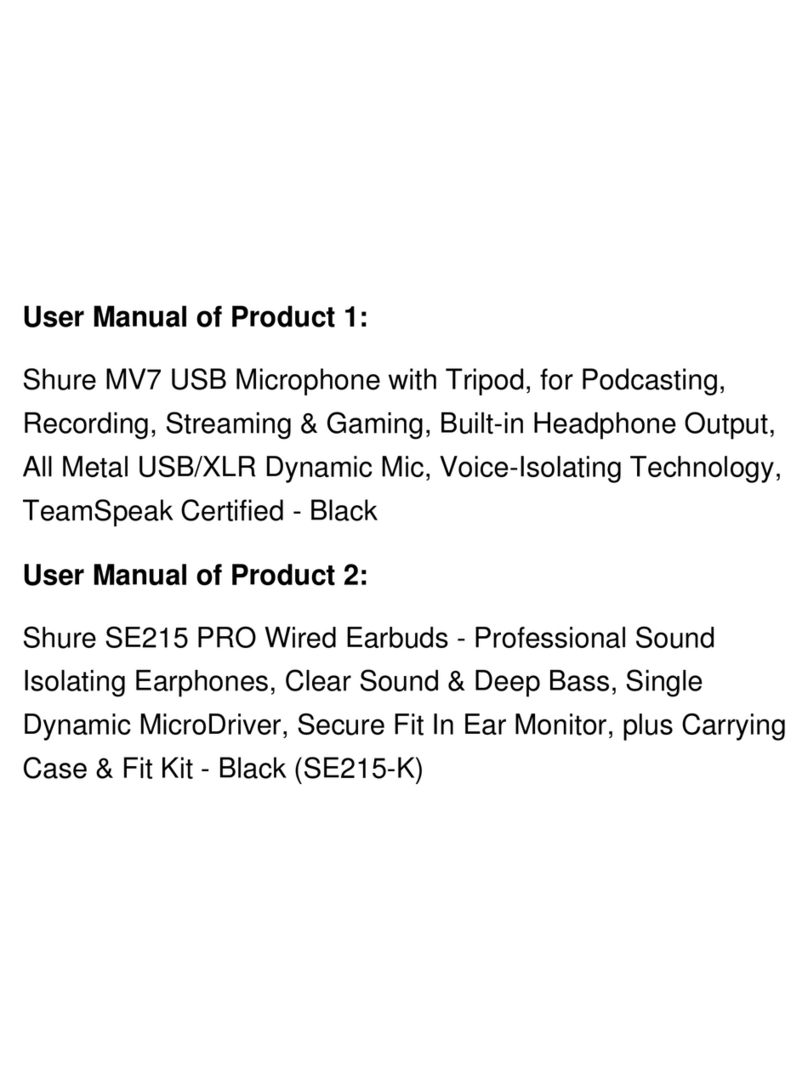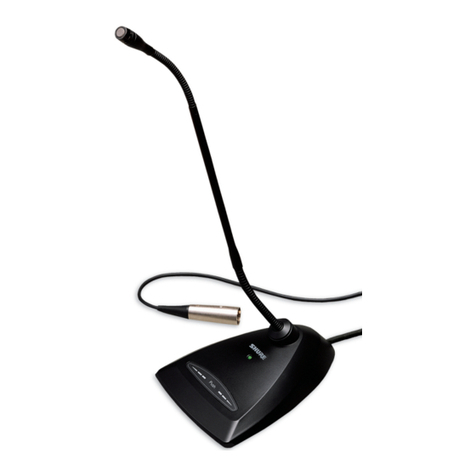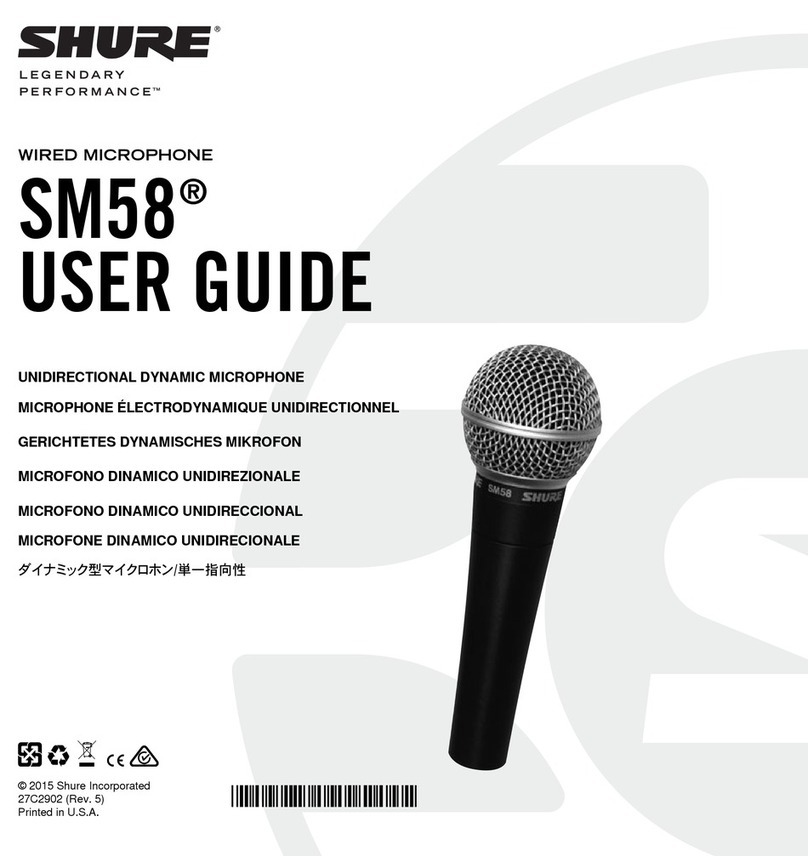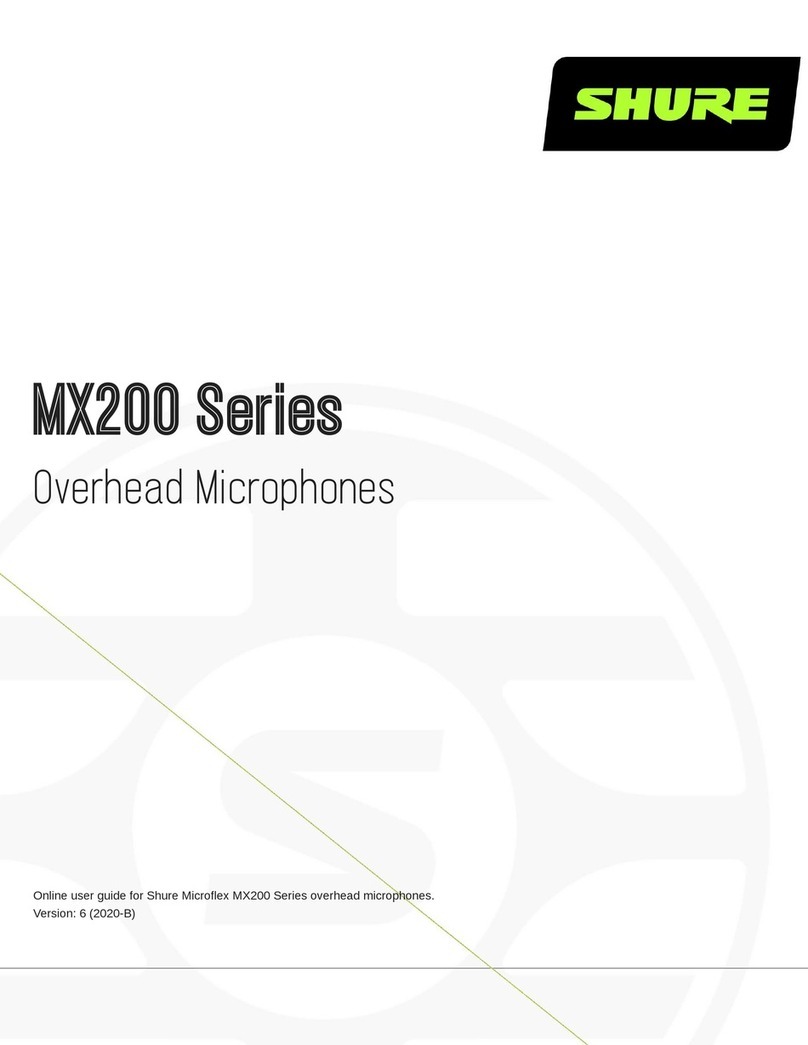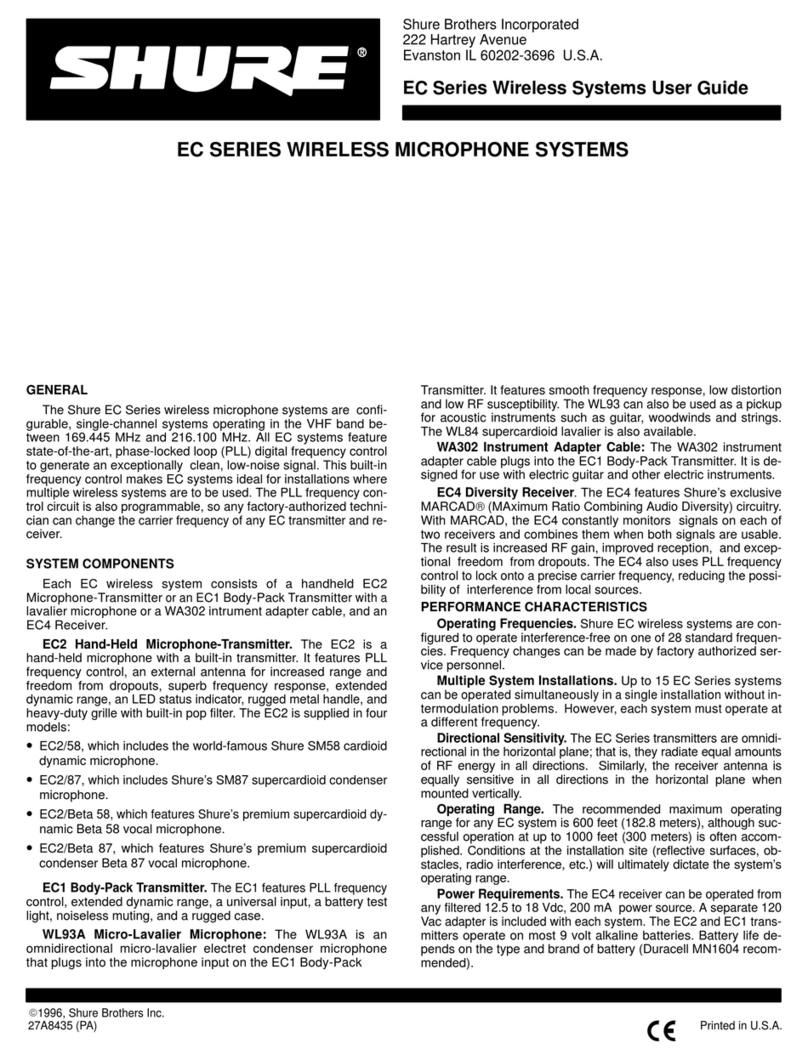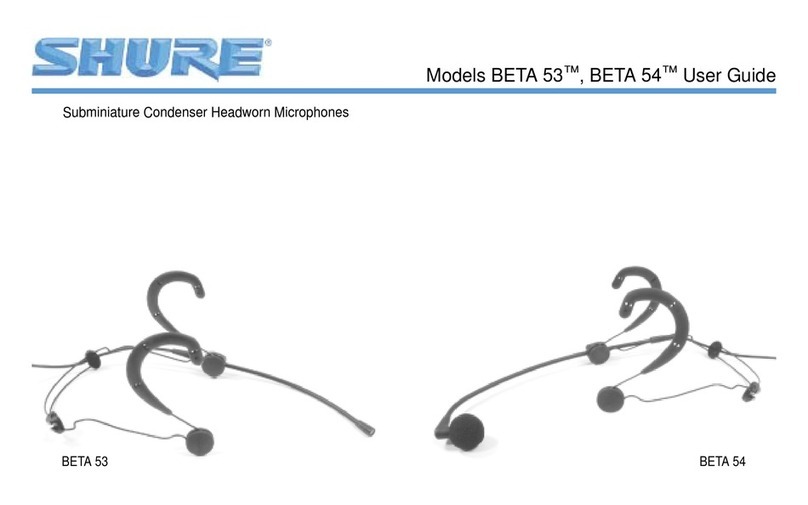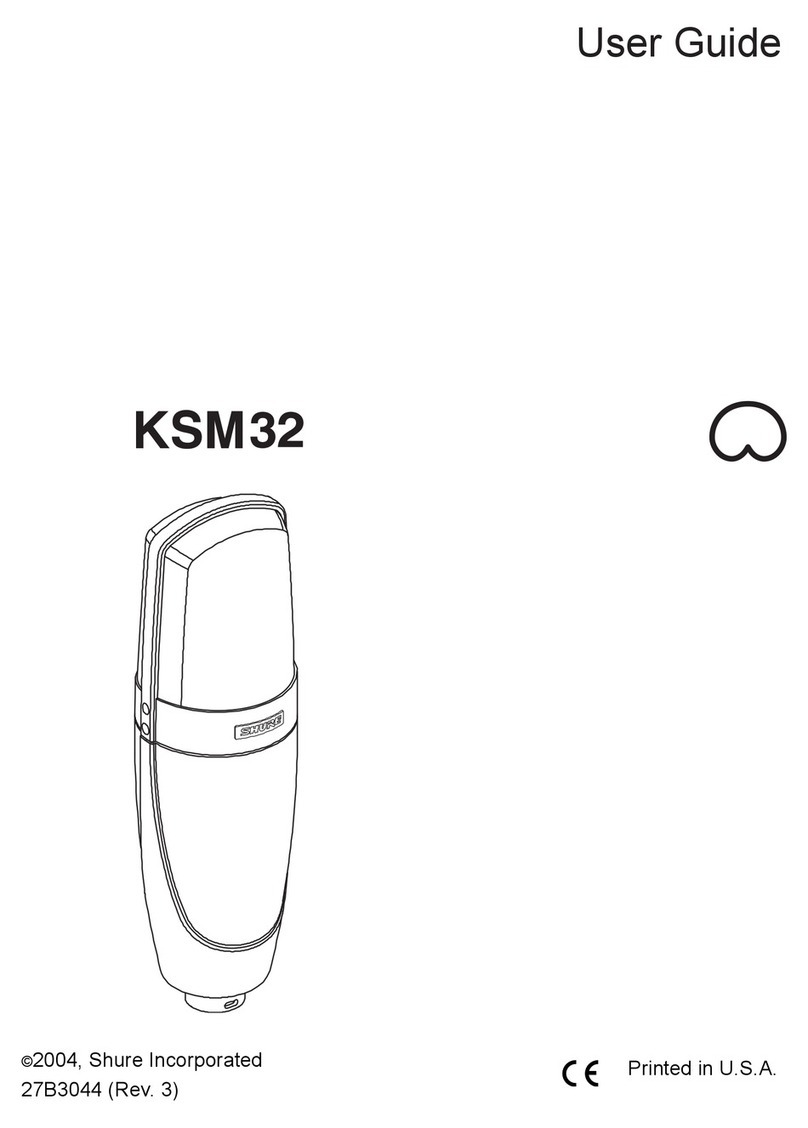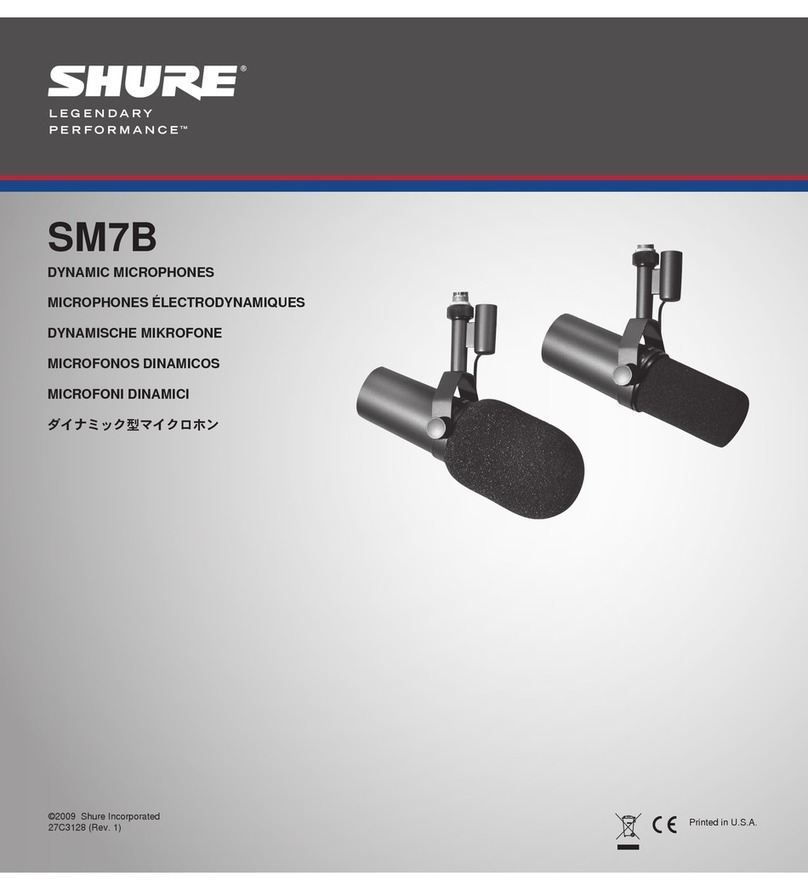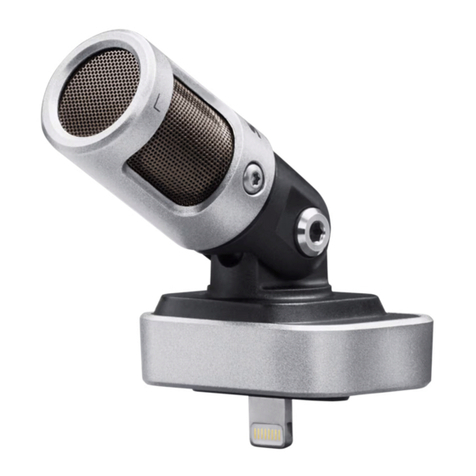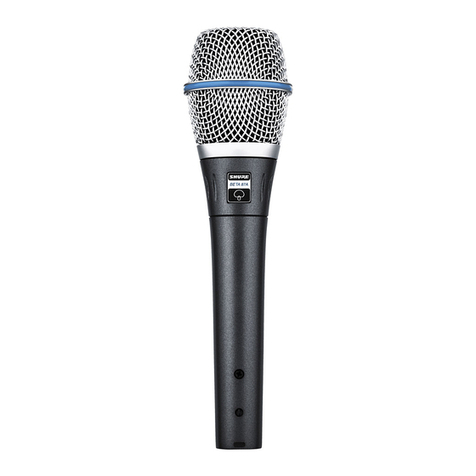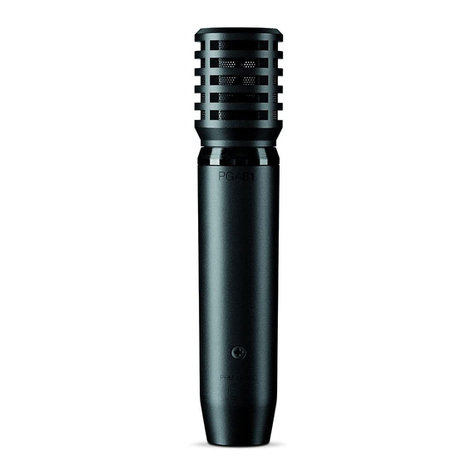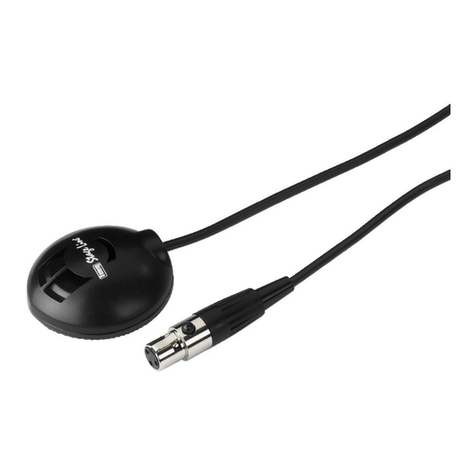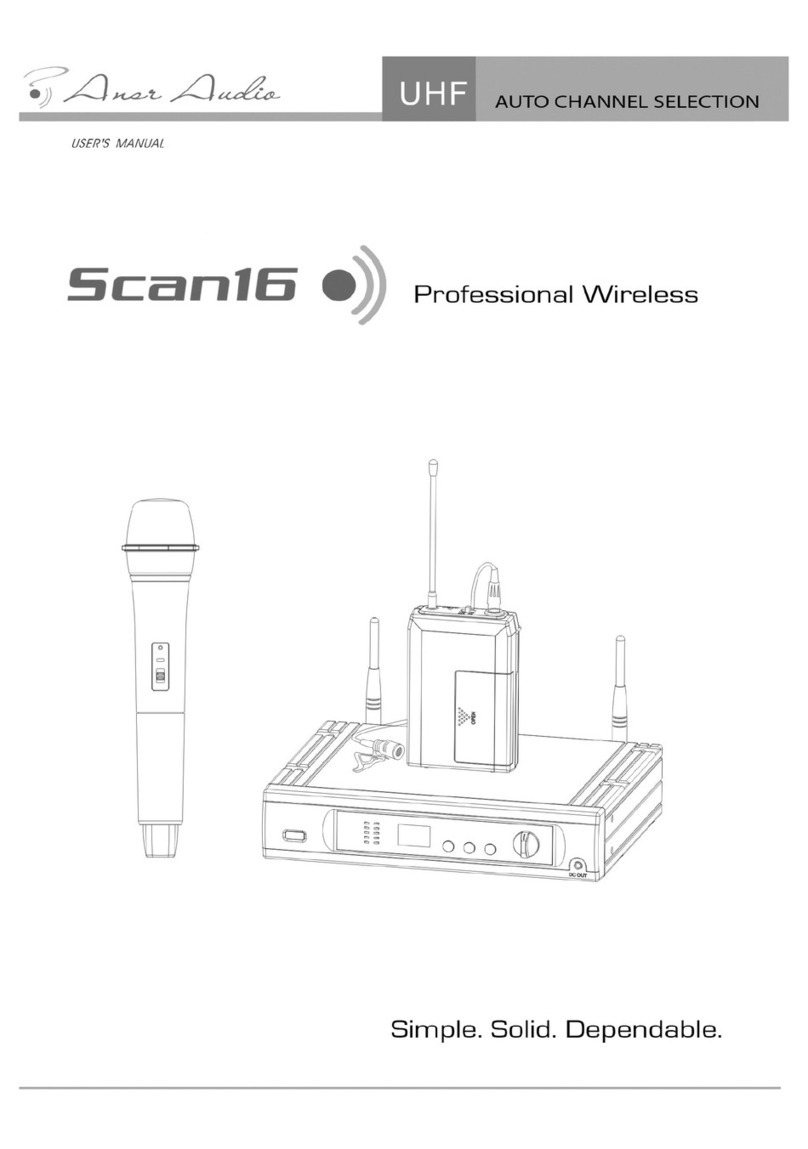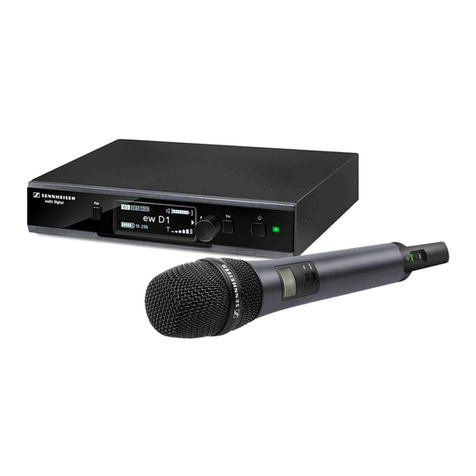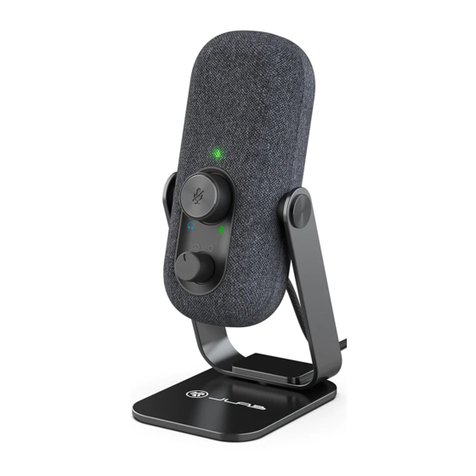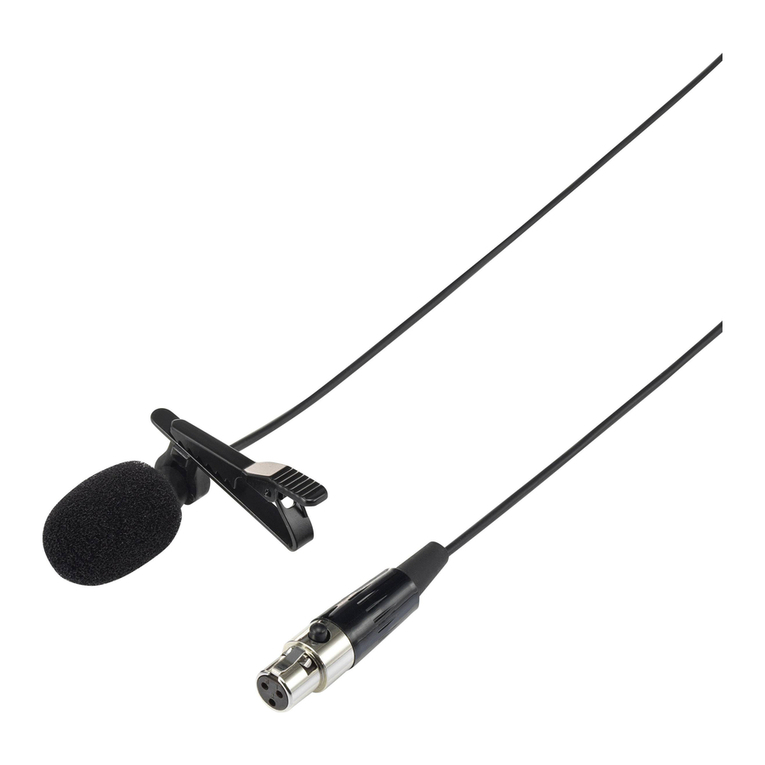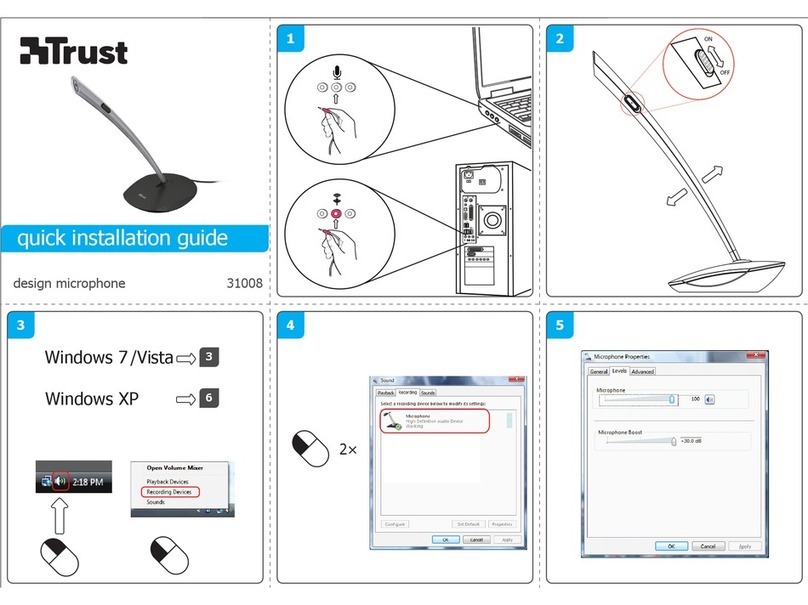SHURE-QUALITY ISOUR FIRST CONSIDERATION
Congratulations on the purchase of your new Shure microphone! It will
serve you faithfully even in the most difficult circumstances. Because more
than 50yearsof experience with microphones hastaught usonething: they
are not always used under ideal conditions. Far from it! So Shure develops,
designs, builds, and tests them for the worst conditions we can imagine.
We know they'll be flung into equipment boxes after performances. We
know they'll be called upon to function at humidity levels near 100%.We
know they'll be left in the direct rays of the midday sun for hours, waiting for
outdoor concerts to begin. Professional vocalists depend upon their
microphones much as musicians depend upon their instruments, but many
don't hesitate tothrow their Shure microphones across the stage and down
on the floor-violently-as part of their performance. They never give ita se-
condthought. They know that Shure microphones shrug off abusethat would
make others fail.
Shure reliability begins during the design stage. Shure has a staff of
specialists whose sole function is to uncover any weaknesses before Shure
microphones are put into quantity production. During the testing process,
microphones are:
Heated attemperatures up to 85OC [I85OF] often for entire days
Frozendown to
-46OC [-50°F] for half-hour periods
during
the heat test
Shakenfromside to
s~de,back andforth, andup anddown, simultaneously
and violently
Subjected tosteamy humidities-up to 100%at room temperature and
93% at 3E°C
[I
OO°F]
Subjected toultraviolet rays, salt sprays, alcohol, sand, and water
And for goodmeasure, droppedrepeatedly
2
meters
[6
ft]ontohardwood
floors.
That is our
standard
test procedure. All during production, units chosen at
random are put through these same tests. Failure of any one microphone
brings production to a halt until the original design requirements are again
met.
That's why at Shure we say, quality is our first consideration. The pur-
chasers of the millions of microphones bearing the name Shure during past
years, and those now buying their first Shure microphone can rely on us to
continue to follow the philosophy and policiesthat keep Shure microphones
working dependably-year after year after year.
Quality is our first consideration!
BASIC MICROPHONE TECHNIQUE
Good microphone technique will add toyour effectiveness as a performer.
Keep the following points in mind when using your Shure Professional Enter-
tainer Microphone.
1.Maintain the proper distance from the microphone. When you want a
warm, full sound, get close tothe microphone and lower your voice. For a
wide open, driving sound, raise your voice and back away from the
microphone to avoid overdriving the amplifier into distortion.
2.
Don't change your distance from the microphone needlessly as this will
affect the level of sound coming from the loudspeakers.
3.
Your Shure PE Microphone is your link to the audience. Consider the
microphone an instrument and develop your technique through practice.
